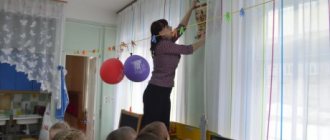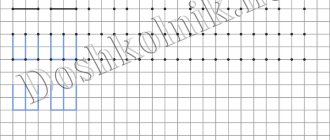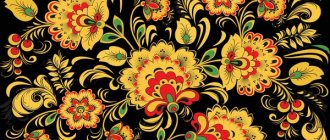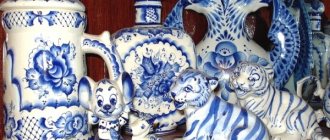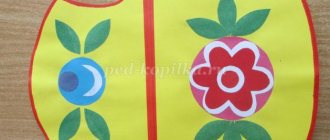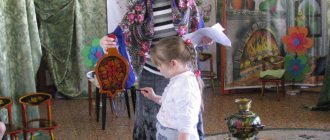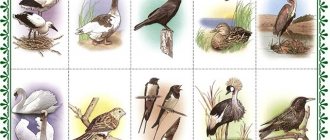Legends and stories
There are several legends associated with the appearance of painting. One legend is associated with the icon painter Andrei Loskut, who left the capital when the patriarch’s reforms began. He settled in a deep forest and continued to paint icons using the usual and now traditional method.
Soon the patriarch learned about the fugitive, who not only continued to paint the faces of saints, but also taught this craft to the local population. In order to prevent public punishment, Loskuta burned himself with his own hands. Before this, he asked the students to preserve the unique art.
Another narrative indicates that an unknown craftsman lived at a distance from society and worked on richly decorated items. He often brought his works to nearby villages. Rumors of unprecedented skill reached the king himself. He ordered his subordinates to find the “Khokhlomist” and deliver him to the wards. But the master disappeared into the forest, never surrendering to the sovereign guardsmen.
History of origin
The craft appeared in small villages and hamlets of the Volga region. Khokhlo was a common name for a place where handicrafts painted by craftsmen were sold. This is where the name of the painting came from.
The craft has a peculiarity that distinguishes it from other types of art: Khokhloma involves gilding, after which decoration is carried out with all kinds of ornaments. The craftsmen used a unique “free brush” style during their work. Thus, the background painting was carried out at the same time, followed by the application of the riding composition.
The city of Khokhloma is located in the Nizhny Novgorod region. Previously, on the left bank of the Volga there were many villages whose indigenous inhabitants specialized in painting wooden products. Man-made objects were brought to the center from other settlements:
- Sabbats;
- Glibino;
- Cartilage.
Scientists are inclined to believe that the coloring of objects “gold” is associated with the Trans-Volga Old Believers. They lived separately and settled in remote forest areas, isolated from other people. Among the representatives of the old faith, talented painters stood out. They used thin brushes to paint icons and decorate books.
In general, the residents of the Volga region were real craftsmen, they were able to master and improve wood carving and turning. The combination of these directions may have marked the beginning of painting. This should be mentioned in an essay or story, message on the topic of Khokhloma.
If we give a general description, then the craft retained and conveyed the impeccable lines created by the Trans-Volga craftsmen, and the pretentiousness of the icon painters. All this was logically combined with classic forms and chic presentation.
Primary colors
The paradox of the Khokhloma folk craft is that having a rather meager set of colors, the artist managed to use it to create patterns whose accuracy and color presentation are impeccable. A distinctive feature of the works is the golden base. Gold could be the background or key elements of the work. The golden color is the very joy of life, wealth and fullness. This is the color of luxury that always looks impressive.
The other two mandatory colors of Khokhloma are black and red. White and ocher became a laconic addition to the designs. They were present in fishing and painting on orange, as well as emerald, scarlet and turquoise backgrounds. But they were less common and did not have the same demand as products with the above-mentioned colors.
One way or another, if you decide to try your hand at Khokhloma, your color palette can easily include:
- black;
- red;
- white;
- orange;
- selected yellow;
- green;
- brown;
- blue;
- emerald.
But the color range is not all the features of the painting. The direction has other tricks that brought it fame.
Technical execution
The wooden blank is dried well, after which a primer is applied using liquid clay and wax. The item dries on average for about 7-8 hours, after which it is carefully covered with drying oil. The procedure must be repeated several times.
The next step is tinning, during which a special aluminum powder is rubbed into the wood. This is exclusively handmade using a leather tampon. Upon completion of the procedure, the surface becomes shiny, it is completely prepared for applying paint. This point should be highlighted in the report on Khokhloma painting.
Patterns are applied using thin brushes of varying sizes. The completed ornament must dry completely, after which varnish is applied to it. The last stage is represented by hardening the object in a special oven, where the temperature is set to +160 degrees. Only after this procedure does the characteristic gold film appear.
Basic motives and elements
The trade presupposes the presence of background and top writing. In the latter case, the ornament is applied to a golden background; it is represented by white, red and black colors. Through Khokhloma painting with a unique presentation, the real Russian soul is revealed. It demonstrates a naive and slightly romantic perception of reality by an entire nation. Unprecedented masterpieces of rich colors and very delicate strokes are represented by spikelets, blades of grass, and elements of still lifes.
Natural patterns are revealed with special sedge-like motifs. In the old version there are on a silver base:
- special smears;
- curls;
- small berries;
- spikelets.
Individual blades of grass intertwine, creating the appearance of a chicken or cockerel; they sit peacefully among the dense thickets on a branch. Leaves and berries are created with rather bold strokes. The overall picture is filled with rather bulky plant forms.
Often in practice, ornaments in the form of bunches of grapes, cherry, raspberry, and strawberry berries are used. There are known works in which a scattering of asters or tulips is decorated with currants or rowan on top.
On the inner surface of saucers with cups there are usually patterns like “saffron milk cap” or “gingerbread”. Similar geometric shapes are inscribed in a rhombus or square. There is always a luminary in the middle. The edges of the pattern are represented by small details.
Horse painting is created using delicate and finest strokes. The finished composition feels airy and light; it literally breathes with a golden glow. The technique for applying the coloring component is quite simple ; it allows you to use your imagination during the drawing process and change the planned elements.
As for the background design, a contour drawing is initially made on the canvas. Next, using a red or black shade, the surrounding space is shaded. All manipulations with the background are a labor-intensive process. Improvisation and fantasy are inappropriate here. The conceived idea should be reflected as accurately as possible.
Significance for the world community
Since the middle of the 19th century, art has become known in the vastness of foreign countries. In France in 1889, an entire exhibition was organized, after which Khokhloma craftsmanship spread to all continents of the planet. Items made by Russian craftsmen began to be found in the markets of Western Europe, China, and India.
The popularity of products made by Trans-Volga craftsmen contributed to the development of the industry. The assortment soon expanded significantly: after cups and spoons, mugs, glasses, boxes, and barrels began to appear. In the West, brothers made in the form of huge vessels like a boat, complemented by a dozen ladles, have become widespread. Such items were usually used at mass feasts.
In Russian culture, ancient folk crafts occupy a separate niche. A characteristic symbol of Khokhloma painting is the Firebird in a fiery design. Over the course of several centuries, the art has only improved. Fancy patterns with plant weaves are loved in Russia; they are widely known far beyond its borders. In a short text of an essay or message about Khokhloma for a school lesson, it is worthwhile to outline the main features of the art. A description of the preparation of objects for further painting will be important.
Types of painting
Masters of the direction use two types of writing - top and background. In the final drawing, the artist applies black or red paint to the base. The background painting has a red or black base with a gold pattern.
Horse drawing
The top design involves 3 types of ornament - “grass painting”, as well as stylizations “like a leaf”, “like a berry”, “gingerbread”.
Ornamental options for horse painting:
- “Grass” - sedge, white grass and meadow grass, these are the main elements of the painting. It is written with curls and various strokes, spikelets or berries on a golden background.
- “Like a leaf”, “like a berry” - artists are engaged in stylization of plant forms. This species differs from the “grass” pattern in its larger strokes, which turn into oval leaves, and the round berries are placed with a brush poke.
- “Gingerbread” is the name given to a geometric figure that fits into a square or rhombus; in the middle of such a figure is the sun. The peculiarity of this ornament is the apparent movement of the patterns.
Doing all of these elements requires a skill that needs to be practiced over and over again.
Background image
In this case, it is worth noting two types of ornament - “under the background” and “curly”. “Under the background” is a very labor-intensive, skillful process that not every master could cope with. Usually these works were made for a gift, they were made to order and for a very high price.
The “curl” is dominated not by the stroke, but by the contour line. This painting resembles a carpet; golden curly curls form patterned leaves, flowers and fruits. This image looks very impressive, and the tricolor (red, black, gold) is quite enough for such expressiveness.
